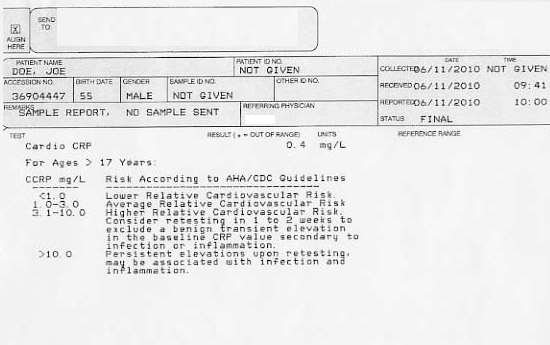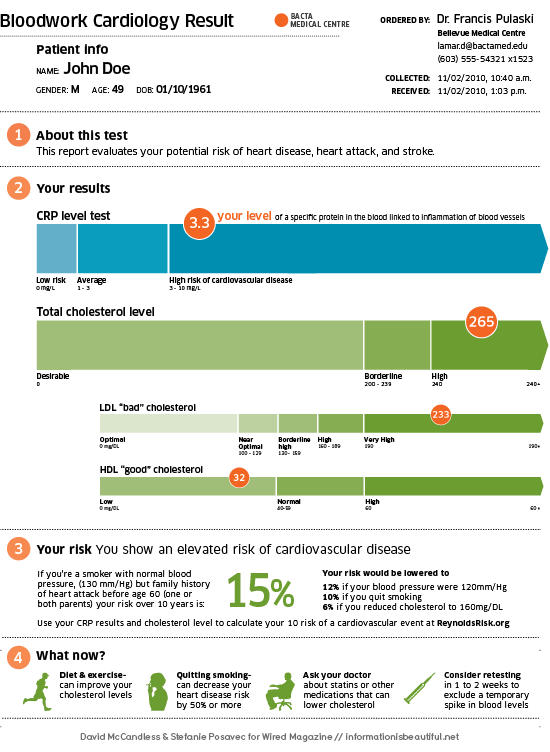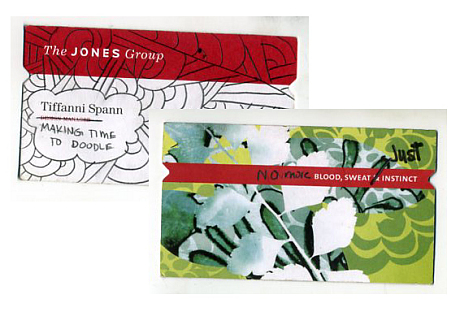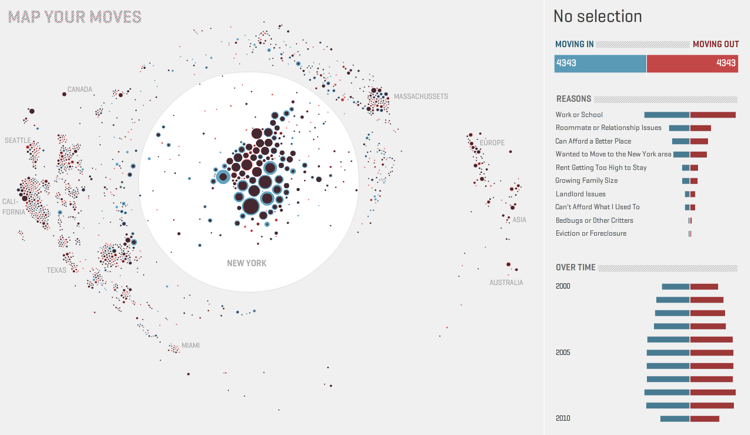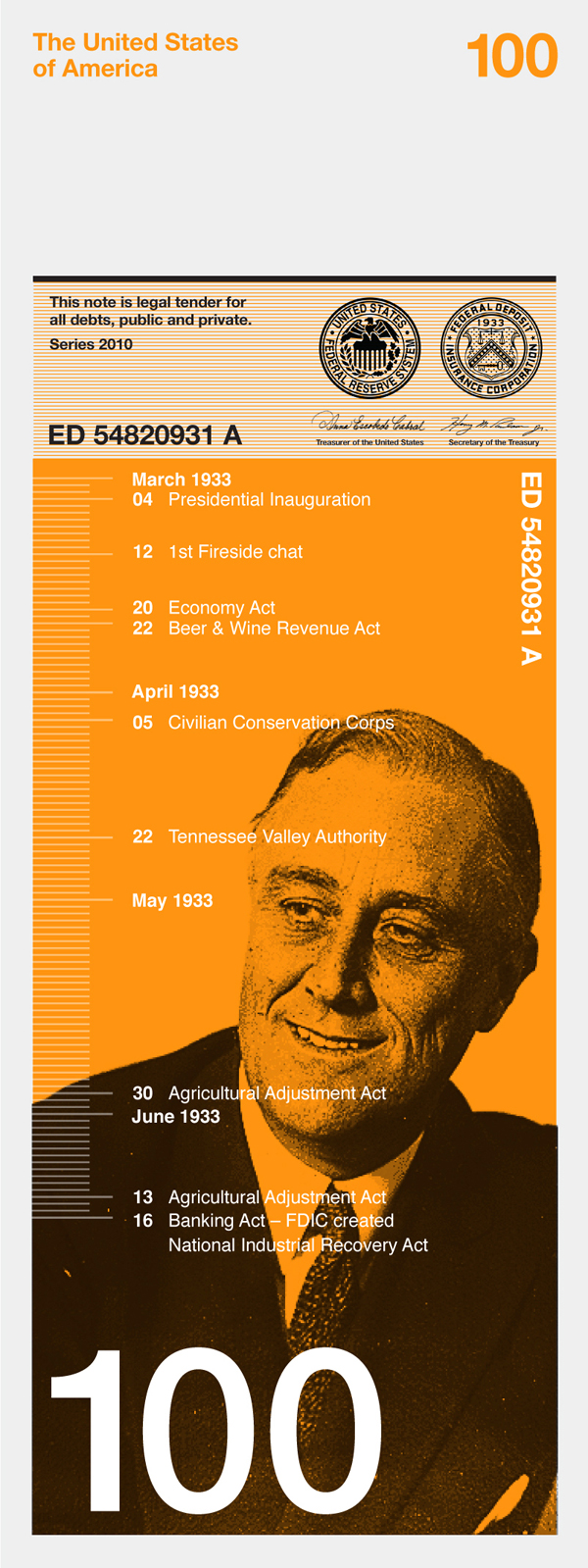Transforming Data into Information
Quick one for today, but aimed for anyone in a management or leadership role that has been handed a report, chart, spreadsheet, or pretty much any common or standard style collection of data that is meant to be informative, but really only leaves you asking, 'Just what am I looking at here?'
I have written previously about incorporating more creative and visually appealing approaches to what is typically flat, and even mundane data, data that really could tell a more interesting, evocative, and relevant story if only it was packaged in a more compelling manner. So for your consideration, from the always entertaining Information is Beautiful blog, a re-imagining of the simple medical blood test results report checking for c-reactive protein, or CRP.
The kind of report that contains critical data, that needs to be interpreted, understood by non-experts, and offer the right kinds of recommendations and call to action. Not unlike the headcount, turnover, and performance management process results that you may read every day.
The typical CRP test report and the starting point for the redesign looks something like this:
The redesigned and re-imagined report looks like this:
All of a sudden, the dull, difficult to interpret, and really sterile data is transformed to a bold, eye-catching, super-informative, piece of actionable information. The re-designed report accomplishes some simple, but important objectives where the old version of the report simply fails to do much of anything except confuse.
With the new report the patient now can better understand the background and purpose of test, visualize their result compared to norms and averages, provide context to other related and relevant metrics, and finally recommend a course of action (with expected and positive outcomes) based on the results.
Clearly the redesigned report is an improvement in every way. I know I have said before, but it bears repeating - most organizations and Human Resources professionals are not suffering from a shortage of data, but rather a shortage of understanding. Maybe the next 'critical hire' you can get approved shouldn't be another HR Generalist or Recruiter. Maybe a really good graphic designer is what the HR department needs.

 Steve
Steve